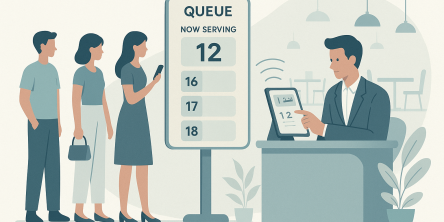Google Cloud vs AWS: Which One Should You Choose?

Cloud computing has arrived on the scene and how! Anyway, now that it is here to stay, there is growing discussion about which cloud service one should pick. For the sake of brevity, we will focus our attention on the two best options in the market, AWS, and GCP.
You would agree Amazon being the first major cloud provider has more experience in the cloud domain than any other provider. And, as one of the oldest providers, it has been able to establish a bigger user base with strong trust and reliability factors. Whereas Google Cloud Platform (GCP) from Google, is a suite of Cloud Computing services that runs on its end-user products as part of the infrastructure focus such as Google Search engine, YouTube, and more.
The following guide seeks to help you understand the differences between the two options and decide which one is better suited for your business.
- Compute: To gauge their respective compute capabilities, allow us to talk about GCP and AWS’ virtual machines. Google’s Compute Engine and Amazon EC2 support autoscaling, though Amazon EC2 auto-scaling instances in a group with every instance being generated from a pre-set launch configuration. The same holds for Compute Engine as well.
- Networking: Considering that we are speaking of Google and Amazon’s respective offerings, there should be no doubt that both of these services have a massive global network and cloud infrastructure. Both of them have also developed their avant-garde networks with low latency levels, high fault tolerance, and numerous redundancy scenarios.
- Storage: In the context of distributed object storage, both platforms offer a similar set of features; whereas for block storage, both AWS and GCP offer several types of configurable block storage along with block storage services which can be easily integrated with their individual VM compute offerings.
- Support: We have a tie between the two in the support department; Google Cloud, as well as Amazon Web Services, offers an abundance of technical documentation. And let’s not forget both of them also enjoy the support of extensive communities comprising experts from all over the world.
- Security: There is no denying that both Google Cloud Platform and Amazon Webs Services are heavily protected by top-notch security measures and tools; one can still gauge the difference between the two platforms’ performances via the analysis of factors such as security OF their cloud offerings, security In their cloud offerings, etc.
- Pricing: If you opt for a small setup, comprising two virtual CPUs and 8 GB of RAM, GCP wins the round because it offers the setup for about $52/month. For a similar setup, AWS’ charges are in the vicinity of $70/month. Similarly, for a larger setup, i.e. one comprising 3.75 TB of RAM and 160 vCPUs, Google will charge you $5.32/hour. On the other hand, AWS’ largest instance includes 3.84 TB of RAM and 128 vCPUs and costs roughly $3.97/hour.
- Market share: Both GCP and AWS figure among the leading 5 public cloud service providers who collectively constitute 80 percent of the market. However, AWS still has an edge over Google’s service because it enjoys a 30 percent market share in the public cloud computing services market.
Let us also quickly take a look at some of the companies that use each of the two cloud services:
Google Cloud: PayPal, Bloomberg, HSBC, 20th Century Fox, etc.
AWS: BMW, Netflix, Airbnb, Samsung, etc.
There is no denying that both Google Cloud Platform and Amazon Web Services are top-notch cloud offerings. However, the above discussion does demonstrate that AWS manages to have an edge over Google’s offering. So, you can assuredly go ahead and start looking for a reliable vendor for AWS cloud application development services and get started on leveraging the might of AWS for your business.
Similar Articles
When it comes to working at heights, safety and efficiency are paramount. Aerial work platforms (AWPs) have revolutionized how professionals approach elevated tasks across countless industries, from construction sites to warehouse operations.
The modern age of customers expect constant availability, no matter what the offer. And for that, the market requires rapid innovation cycles. In such a high stakes environment, technology infrastructure is more than just a cost center.
When evidence seals fail, cases weaken. Explore how compromised chain of custody can derail investigations and jeopardize justice.
Compare hydraulic and traction residential elevators to find the best fit for your home. Learn how each system works, their pros and cons, space needs, energy use, and maintenance requirements.
Extend the lifespan of your commercial marina docks with proactive maintenance. Learn essential inspection routines, material-specific care, and safety tips to protect your investment and ensure long-term dock performance.
Learn the key factors in designing an engineered fall protection system. Discover how hierarchy of controls, task analysis, structural integrity, and fall clearance ensure safety and compliance.
Today, modern businesses face constant pressure to operate with maximum efficiency. This requires a technology infrastructure that is both agile and robust. However, the traditional model of on-premises data centers often has significant limitations. These legacy systems can drain valuable resources from teams.
When people are hungry, standing in line for a table feels tiring and unpleasant. In fact, research shows that most individuals will just walk away if they have to wait longer. They will go and find another place to eat.
In the early stages of designing new community centers, fire stations and administration buildings, city planners and architects are forced to make a crucial decision: What building material is best suited for providing the most value, safety and longevity to the public?









